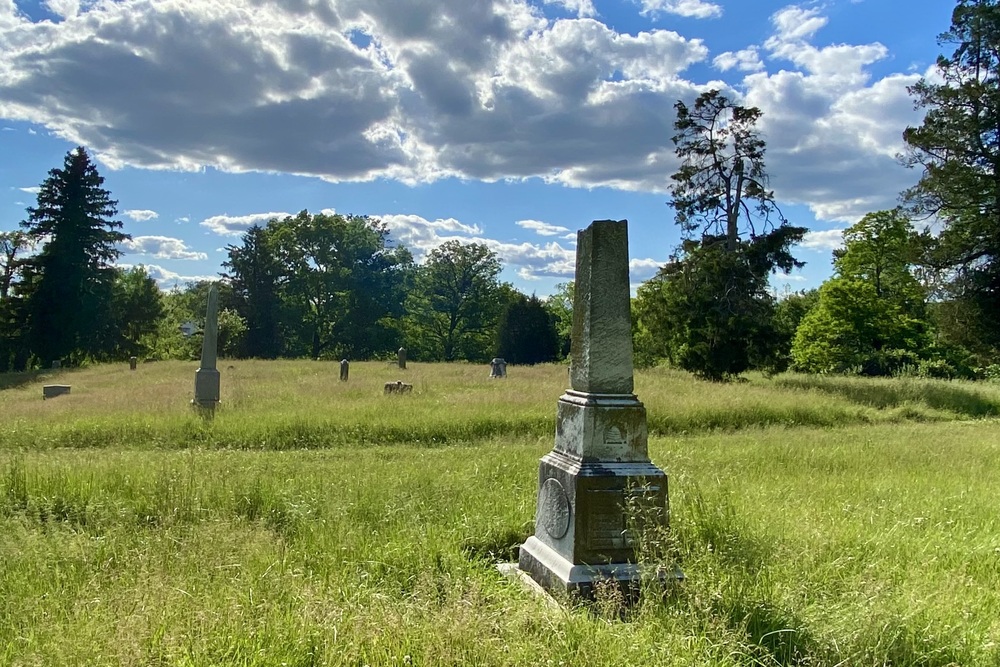John Isom Gaines Monument
One of the most important grave markers for an African American in Cincinnati

When the grave monument for John Isom Gaines was erected on August 1, 1860, the Cincinnati Commercial newspaper estimated that 3,000 people attended the ceremony – at a time when the entire Black population of Hamilton County was around 4,600.
Born in 1821, John Isom Gaines was one of the earliest major leaders of Cincinnati’s African American community. He attended a statewide Black convention in 1838, when he was only seventeen, and it galvanized him to political action. He rose to prominence as an orator in Cincinnati around the time of the anti-Black riots of 1841, when he was twenty.
Gaines was a leading delegate to the Colored Convention in Columbus in 1849, where he called for the repeal of the “Black Laws,” and for better educational opportunities for African Americans. Only a month later, the Ohio General Assembly set aside funds to create a statewide school system for African American children, and Gaines became the chief administrator of the new school board.
John Isom Gaines died in November 1859. His funeral took place without any large grave marker – it would take a year for the African American community to raise funds for a suitable monument – but the funeral was still described on the front page of the Cincinnati Commercial as an “imposing pageant.” The newspaper account continues, “John Gaines deserved the honors which his race paid him. Next to Fred Douglass, he was perhaps the most distinguished colored man in the United States.”
After enough money was raised, a monument was carved for Gaines, made of marble, eight feet high. Since Gaines was only 38 when he died, the monument was carved in the shape of a broken shaft – a symbol of life cut short. Gaines’ name and dates of birth and death were carved on the base over the symbol of an open book. On the shaft is the symbol of a beehive, the emblem of the United Colored American Association (UCAA), an organization of which Gaines was a prominent member.
It was clear that installation of this monument would be cause for celebration. A ceremony was planned for August 1, 1860 – the anniversary of emancipation of enslaved persons in the West Indies. It was decided that there would be a procession from downtown Cincinnati to the African American cemetery at Avondale – a distance of four and a half miles. (Gaines’ grave and his monument have since been moved from Avondale to Madisonville.)
When the procession reached Avondale, the cemetery was already crowded. The official program began with a reading of the scriptures, followed by hymns, prayers, and speeches. Then came the raising of the shaft. Then there was music by the band followed by a benediction.
Since the time of its completion, the Gaines Monument has been a touchstone of African American memory. In 1867, seven years after the monument was erected, it was described in an article in the Cincinnati Commercial Newspaper. The Gaines Monument is mentioned by Rev. Benjamin Arnett in a book he wrote in 1874. Educator Peter H. Clark spoke about the Gaines monument in 1880. And journalist Wendell Dabney wrote about the monument in his 1926 book, Cincinnati’s Colored Citizens.
Though John Isom Gaines is less well known today, his monument is a vital part of African American history in Cincinnati.
Images
